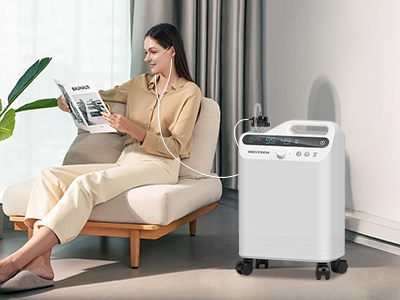02 Jun 2025
Oxygen therapy at home can be transformative—returning color to cheeks and energy to days. But with this power comes a responsibility as weighty as a full oxygen tank. While the equipment is designed to be safe and user-friendly, home use introduces unpredictable variables that demand foresight and consistent care. Safety isn’t a luxury—it’s the linchpin of successful therapy.

Understanding the Nature of Oxygen Therapy
At its core, oxygen therapy involves delivering concentrated oxygen to individuals who cannot get enough from ambient air. This includes people with chronic obstructive pulmonary disease (COPD), pulmonary fibrosis, severe asthma, or heart failure. The oxygen itself is not flammable—but it feeds fire with relentless enthusiasm.
Understanding this paradox is vital. What helps the body heal can, if mishandled, transform into a serious hazard.
Fire Safety Fundamentals
Oxygen turns small sparks into raging infernos. That’s not hyperbole—it’s science. Homes with oxygen therapy must become no-flame zones. This includes a strict ban on smoking, candles, incense, fireplaces, and gas stove usage in the vicinity of the equipment.
It’s essential to maintain at least a 10-foot radius between oxygen sources and any heat-producing appliance. Even electronic devices like hair dryers and space heaters should be used with caution. Post clear signage where needed—especially if visitors frequent the space.
Proper Storage of Oxygen Equipment
Oxygen tanks should stand upright, secured in a stand or cart to prevent tipping. They must be stored in well-ventilated areas, away from sunlight and heat sources, to reduce the risk of pressure buildup. Never tuck them into closets or small enclosed rooms where gases might accumulate.
Concentrators, though less volatile, still require breathing room. Keep them away from walls or furniture that might block airflow, and ensure cords are routed safely to avoid snags.
Safe Usage in the Home Environment
Electricity and oxygen demand careful choreography. Avoid plugging oxygen concentrators into extension cords or power strips—these can overheat or surge. Always use grounded outlets.
Tubing should be routed thoughtfully to avoid trip hazards. Coil excess lines, and use clips or guides to secure tubing along walls or under rugs with non-slip backing. Pets, toddlers, and vacuums tend to see tubing as a toy or nuisance—another reason to keep lines organized and out of high-traffic zones.

Hygiene and Maintenance of Equipment
Cleanliness is more than a comfort—it’s a necessity. Cannulas and masks should be cleaned daily and replaced regularly, as advised by the manufacturer. Humidifiers, if used, require distilled water and daily rinsing to prevent microbial growth.
Concentrators and tanks should be inspected weekly for cracks, loose fittings, or unusual noises. Professional servicing is recommended every 6–12 months, depending on usage. Equipment that smells burnt, makes rattling sounds, or delivers inconsistent oxygen flow should be retired immediately.
Educating Family and Caregivers
Oxygen safety must be a shared mission. Every household member—young and old—should understand the dos and don’ts of oxygen use. Create a basic safety guide and keep it visible in main living areas.
Conduct mock drills for emergencies like fires or equipment failure. Everyone should know how to turn off tanks and concentrators, where backup oxygen is stored, and how to contact emergency services.
Mobility and Travel Considerations
Portable oxygen devices allow users to reclaim their mobility. But portability requires preparedness. Always carry a backup supply, whether it's an extra tank or battery. Store the equipment upright and secured during car rides.
Airline travel has its own rules—notify the carrier in advance, carry documentation, and verify that your device is FAA-approved. Keep tubing tangle-free and close to the body to avoid getting caught on armrests or other passengers.
Recognizing Signs of Malfunction or Danger
Subtle changes often precede serious issues. Is the oxygen flow weaker than usual? Do you hear hissing, whistling, or clicking from the device? Is the unit unusually warm to the touch? These may signal leaks, blockages, or electrical faults.
If oxygen flow stops or the device fails, use a backup source immediately and contact your oxygen supplier. Never try to fix devices yourself unless instructed by the provider. Always report malfunctions—even minor ones.
Conclusion: Safe Breathing Starts at Home
Home oxygen therapy doesn’t need to feel restrictive or nerve-wracking. With clear guidelines, consistent habits, and open communication, it becomes a natural part of daily life. The safety measures outlined above are not burdens—they’re building blocks for well-being.
Oxygen is life-giving. When treated with respect, it delivers not just breath—but freedom.
Keywords: oxygen therapy
Originally published 02 Jun 2025, updated 02 Jun 2025.